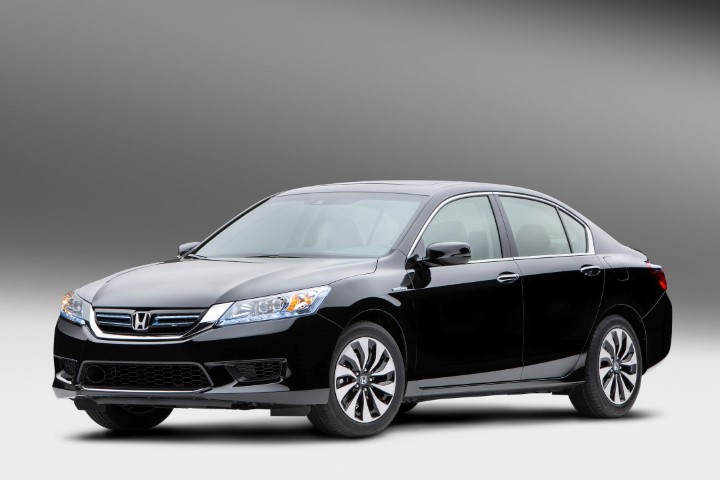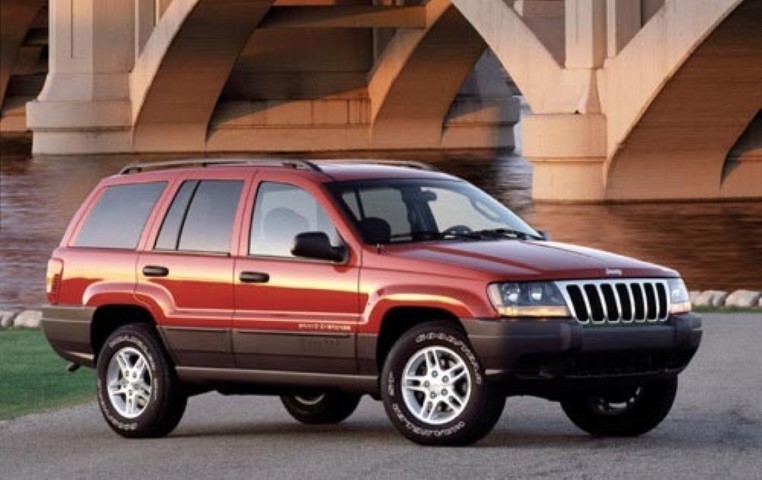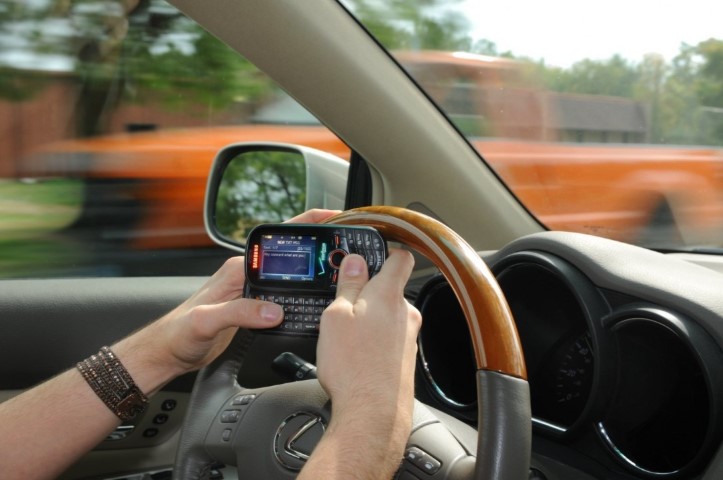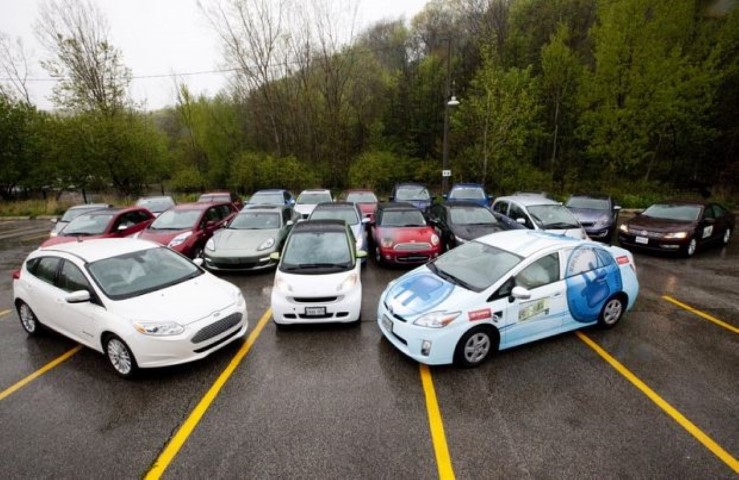
Concern with fuel costs has dominated news headlines for years and there doesn’t seem to be any relief coming anytime soon. However, during that same timeline and even before, car manufacturers have shifted their attention to fuel saving vehicles and expedited its production to alleviate some of the stress at the pumps.
Last year, AJAC started the Eco Run to feature and educate consumers on the more fuel-efficient and environmentally safe vehicles that are available. It was a chance to learn more about fuel-efficient technologies and auto manufacturers helped this venture out by providing their latest and greatest vehicles on a multiple day drive throughout different areas of Canada.
The Eco Run is not only about the vehicles, but about the way we drive them. It’s understandable that you might not be looking for a new car at the moment, but there are plenty of ways that you can still save money at the pump by the way you drive them and that includes the gas guzzlers you might own. I will get into this a bit more as we go along.
The first Eco Run last year went through Ontario from Brighton to London, but Eco Run 2.0 took a more exciting route from Ottawa, Ontario to Montréal, Quebec just ten days ago. There were 22 vehicles in total assigned to 22 AJAC members throughout the three day journey. I was assigned five different vehicles to parade to the various staged stops along the way.
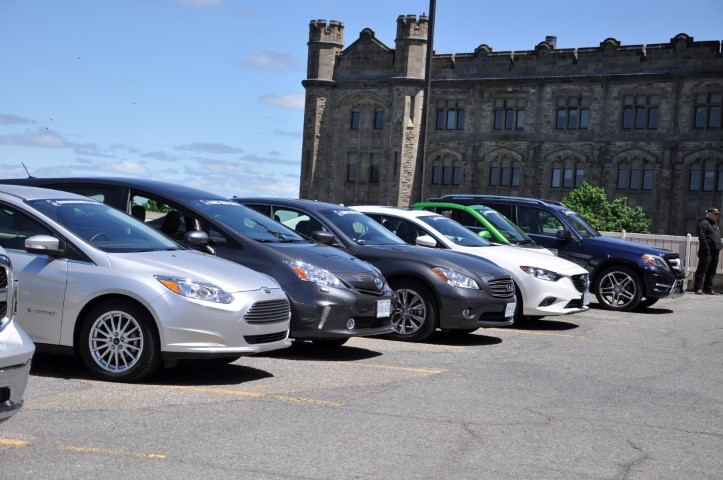
On hand for the second annual Eco Run was a variety of vehicles including full electrics, hybrids, plug-ins, diesels and straight out more fuel-efficient vehicles with internal combustion engines (ICE). And within those segments were a variety of compact cars, sedans, SUVs and one large pickup truck.
I’m going to break down all the different vehicles I drove, as well as the stops along the way.
Day 1 – Ottawa, ON to Montebello, QC
The Eco Run starting spot was the Hilton Garden Inn where we were assigned our vehicles to drive to the Natural Resources Headquarters in Ottawa for the official start. Mine was the Mercedes-Benz GLK 250 BlueTEC – the first diesel in its class.
There’s nothing like the GLK 250 out there making it more impressive as it smoothly made its way around the Parliament buildings. The GLK is fitted with a 2.1-liter inline four-cylinder turbo-diesel engine that has 200 hp and a whopping 369 lb.-ft. of torque. There wasn’t a peep heard in the cabin as I hypermiled my way to the Chateau Laurier for lunch.
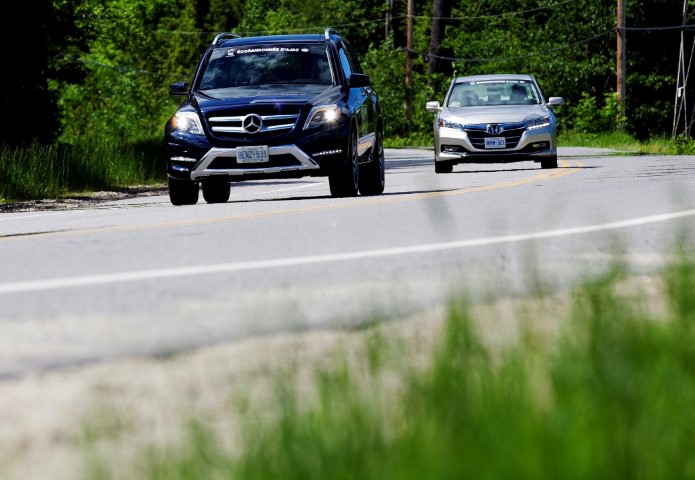
The key to driving efficiently is being gentle on acceleration. Once you’ve slowly reached your desired travelling speed, you should maintain that pace throughout unless you need to slow down or stop. A nice tip when getting ready to stop is taking your foot off the accelerator and coast to decelerate before eventually braking. In order to do this, you must always be fully aware of what’s going on around you. If you can foresee what’s going to happen ahead, such as a yellow light or checking the walkway countdown numbers (which I know we all do) we can be able to coast and reduce carbon dioxide emissions and lessen our trips to the pumps.
At the end of the morning session of almost all city driving, the GLK 250 had a combined fuel economy rating of 7.6 L/ 100 km, which is incredible given Mercedes-Benz ratings for it at 7.2L/100 km combined at 8.3L/100 km in the city.
All of those eco-driving techniques were employed during my drives and they should be incorporated into your driving habits as well. I explained all of those habits to some CAA members after they finished their AGM meeting at the Chateau. They were very eager to hear more about some of the individual cars and ways they can save money. It was a nice opportunity to share our wealth of knowledge with consumers who generally showed an interest in cars and the environment.

The afternoon portion of the day had me in something totally different, a pure electric – the Ford Focus EV. This would be a total change from the SUV, but that’s what the Eco Run is all about.
The all-electric 2013 Ford Focus has an electric motor that produces 143 horsepower and 181 lb.-ft. of torque coupled with a lithium-ion battery and a single-speed automatic transmission. For this trek, I was to take that Focus EV from the Chateau Laurier to the Chateau Montebello. Sounds good doesn’t it!
The only issue with a pure EV is distance – I’m sure the organizers of this event put that at the top of mind when mapping out the routes. The Focus EV could go around the 100 km mark and this trip was just shy of 90 km, so this would put my navigational and driving talents to the test. As many can attest to, my navigational skills can be questioned at all times.
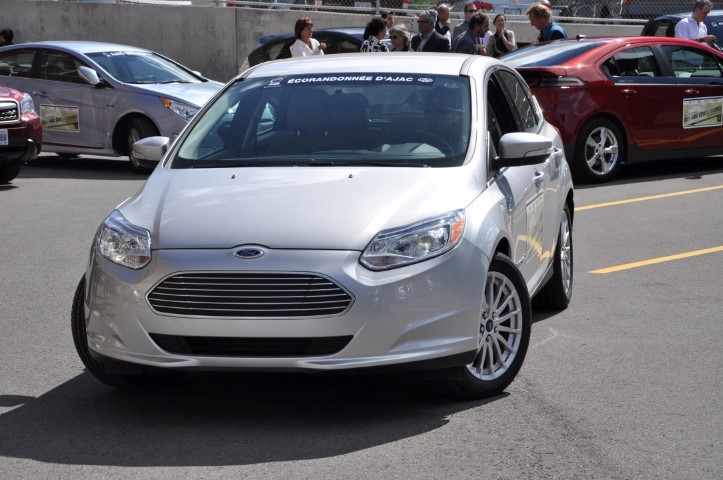
Not surprisingly, a wrong turn was made before I entered the highway out of Ottawa and I had to make a few turns to get back on track. Not a biggie, as I had some room to spare and I knew my steady highway driving would provide me some added driving time. I arrived at the Chateau Montebello with 14 km to spare and a chance to relax and marvel at the stunning Chateau.
Day 2 – Montebello, QC to Saint-Eustache, QC
After a night of shenanigans and rest, I set my sights on the Mazda CX-5 Skyactiv for the drive from Montebello to Blainville.
The Mazda CX-5 was the first Mazda vehicle to offer Skyactiv technology. There’s a lot of talk about Skyactiv, but most don’t have a clue what it is. It’s a new way of thinking by Mazda as they make use of technology, redesigned suspensions and lighter materials to increase the compression ratio to 14.0 to 1. The result being a much more fuel-efficient gas-vehicle that doesn’t bleed your money dry.

Mazda chose their 2.0L engine in manual mode for the event that puts out 155 hp and 150 lb.-ft. of torque. The manual version is rated at 5.7L/100 km on the highway and I’m happy to report that according to AJAC’s numbers I posted a 5.71L/100 km on the 90 km trip from Chateau Montebello to the PMG facilities in Blainville. I originally thought I was driving in the mid-7 range, but realized I must have not re-set the previous numbers. That seems about right coming from me. It’s amazing to see that sometimes those fuel-economy numbers are really accurate!
As we entered the PMG facilities, PIT (Performance Innovation Transport) was having their fifth anniversary celebration. Part of the celebration was a technology fair that included tire companies, breathalyzer test devices (not for us) and pure energy transport vehicles to name a few. You could also try out a truck simulator or go on a bus tour (more of a talk on a stationary bus) of PMG’s oval track where they test out their trucks. In the end, it was an educational experience and a true showcase of new automotive technologies for the present and future.
The fun didn’t stop there as we were treated to a backstage viewing of PMG’s crash-test area. The security was tight and we weren’t allowed to take pictures or video, but we were able to witness a demo crash with a family of four crash-test dummies inside. It was a head-on collision with a Ford Fiesta at 80km/h that led to a massive thud. We assessed the damage that seemed minimal for the passengers, but for some reason they never described the outcome. Oh well off to the next venture…

We left the PMG facilities to head to our hotel in Saint-Eustache. For this short trip of 16 kms, I was given the opportunity to drive the brand-new Honda Accord Plug-in Hybrid. This version of the Accord is not available in Canada at the present time, so I was lucky enough to be able to see what it had to offer.
To give you some details on the Accord Plug-in Hybrid, it’s powered by Honda’s first two-motor hybrid system using Honda’s new Earth Dreams 2.0L 4-cylinder engine with a 124-kW electric motor, as well as an electric drive coming from a 6.7 kWh lithium-ion battery for a total system output of 196 hp. The Accord Plug-in Hybrid just about showcases what the Eco Drive is all about.

Unfortunately, we were in stop-and-go traffic on the Quebec highway, so it wasn’t much fun or testing going on. The Accord Plug-in Hybrid was very quiet and smooth throughout the drive. I can definitely say the brakes worked very well and stopped on a dime when needed all 120 times I practiced that motion.
Day 3 – Saint-Eustache, QC to Montréal, QC
This was the shortest day of the Eco Run that saw us go from our hotel in Saint-Eustache to Montréal’s École Polytechnique workshop. It was another chance for me to test out Mazda’s Skyactiv technology in their new Mazda6.
The new Mazda6 is all-around extraordinary, especially the interior, but that’s for a different article. Its new 2.5L L4 SKYACTIV-G engine didn’t use all of its 184 hp on this trip, but you knew it was there when needed. This Mazda6 also uses an i-ELOOP energy recovery system that stores wasted energy while coasting or braking – perfect for the Eco Run.

I ended up achieving 5.28L/100 km on a drive where I was trying to get to the school at a little bit of a quicker pace as I had to leave right after. I utilized all of my eco-driving tools, but increased my usual highway speeds from 90km to 100km still reaching my destination with great fuel economy scores.
In Conclusion
The AJAC Eco Run 2.0 from Ottawa to Montréal was another success story. It was a great showcase for all of the various types of fuel-efficient vehicles that are offered. I only tested out 5 of the 22 vehicles, but in those five I got to experience a diesel, a pure electric, a plug-in hybrid and the innovative Skyactiv technology in both SUV and sedan form.
The technologies utilized today coupled with a better eco-friendly driving technique can help sustain our environment and that was the purpose of this mission. If you took something out of this write-up or the Eco Run in general, I’ve done my part to spread the word. If you’re looking for more information about the various fuel-efficient models in the Eco Run or the technologies in them feel free to contact that respective manufacturer and they will assist you with any questions you have. For now – drive safe and think twice before you aggressively accelerate off that line!
